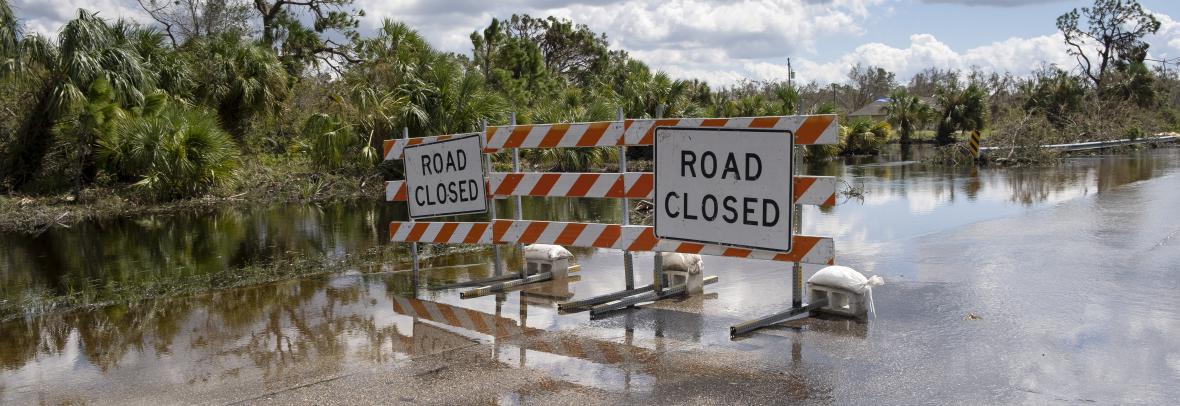
U.S. Disaster Losses Expected to Rise in 2025
Global insured losses from natural disasters may reach $145B in 2025, driven by secondary perils, with losses potentially surpassing $300B in severe events.
NEW YORK — 2025 started with wildfires in Los Angeles, causing an estimated $40 billion in insured losses. While these losses from a secondary peril are substantial, primary perils remain the biggest threat: When a severe hurricane or strong earthquake hits a densely populated urban area, insured losses in that year could be more than double the long-term loss trend.
Based on model analysis, Swiss Re Institute estimates that hurricanes and earthquakes could drive global insured losses to $300 billion or more in a peak year.
Urs Baertschi, CEO property & casualty reinsurance at Swiss Re, said, “In addition to helping clients with traditional risk transfer, reinsurers also provide data, risk insights and knowledge about where dangers lie. The reinsurance industry is a shock absorber when danger materializes into disaster and an essential discussion partner around risk awareness and risk prevention.”
Key takeaways from Swiss Re Institute's analysis:
- Following the long-term annual growth trend of 5-7%, global insured natural catastrophe losses may reach $145 billion in 2025, mainly driven by secondary perils like severe thunderstorms, floods and wildfires.
- Primary perils like hurricanes and earthquakes pose biggest risks, potentially driving insured losses to $300 billion or more in a peak year, according to Swiss Re Institute analysis
- Reinsurers pivotal for peak years and well capitalized to absorb large shocks with estimated global capital of $ 500 billion
Understanding peak years and rising exposure
Peak years, due to a few primary-peril events or the accumulation of both secondary-peril and primary-peril events, should not be considered an anomaly.
The most recent peak year was 2017, driven by Hurricanes Harvey, Irma and Maria. Since then, underlying risk has increased continuously with economic and population growth as well as urban sprawl, including in areas vulnerable to natural catastrophes. In addition, climate change effects are playing a role in compounding losses for some weather perils and regions.
Balz Grollimund, Swiss Re's head of catastrophe perils, said, “Our recent analysis of over 200 in-house models and the loss trend over the last 30 years show what is at stake. When a severe hurricane or a major earthquake hits an urban area in a country with significant insurance take-up, insured losses could easily reach $300 billion in that year.”
According to Swiss Re Institute estimates, some of the hurricanes from the early 20th century would cause losses well over $100 billion if they were to strike today.
For example, Hurricane Andrew icaused $35 billion in insured losses in 1992. If a hurricane were to strike the same path today, it would cause losses nearly three times higher, due to economic growth, population increase and urban sprawl. Meanwhile, Hurricane Katrina, the costliest single insured loss event for the re/insurance industry ever, would not cause the same destruction as 20 years ago. Insured losses would still reach around $100 billion due to rising housing and construction costs, but improved flood defenses and a 20% decrease in local population along Katrina's path have significantly reduced exposure.
Exposure to natural catastrophes drives U.S. insurance claims costs
While loss severity is rising globally, the U.S. accounted for almost 80% of global insured losses in 2024, due to its vulnerability to severe thunderstorms, hurricanes, floods, wildfires and earthquakes.
Insurance premium rates are informed by many factors including local regulations and inflation. Yet in the long-run and across geographies, the main factor determining claims cost and premium rates is exposure to natural perils. This is evident in states like Florida, Texas, California, Louisiana and Colorado, which account for about 50% of all natural catastrophe losses in the U.S.
Florida faces high hurricane-related losses, with premiums per household twice the national average. Similarly, in California, the highest premiums are localized in areas with greatest exposures to wildfire risk.
As natural catastrophe losses continue to rise, it is crucial to reduce loss potential from the outset, both to reduce the cost of insurance and to maintain the viability of risk transfer business. For example, severe storms can overwhelm local protection systems and cause flooding, and while mitigation measures come at a price, a recent Swiss Re Institute study shows that flood protection through dikes, dams and flood gates is up to 10 times more cost-effective than rebuilding after a disaster.
“Close collaboration between the public and private sectors is vital for effective protection measures to reduce losses. In addition, a well-capitalized reinsurance sector, backed by $500 billion in capital, acts as a vital shock absorber, helping communities and economies recover more quickly. That is why it is important that capital grows in line with rising risk, for the industry to fulfil their role for future peak years,” Jerome Haegeli, Swiss Re's group chief economist, said.
Total economic and insured losses in 2024 and 2023
In 2024, global insured losses from natural catastrophes reached $137 billion, driven by Hurricanes Helene and Milton, severe convective storms in the U.S., wildfires and major floods worldwide.
Source: Swiss Re Institute
© 2025 Florida Realtors®
